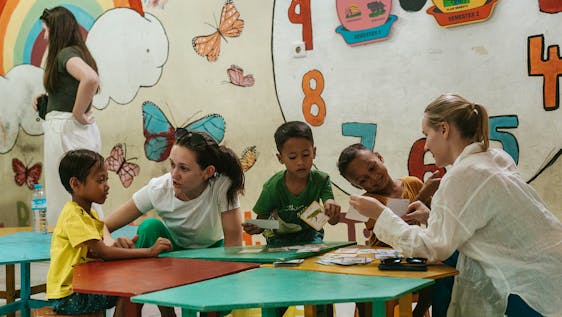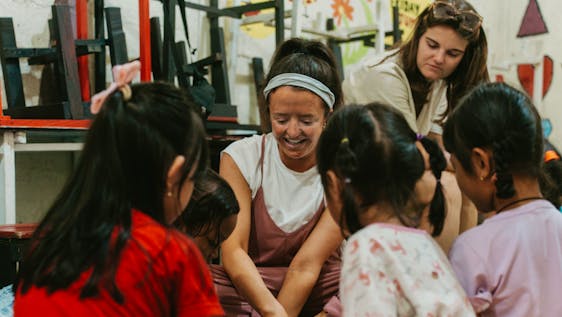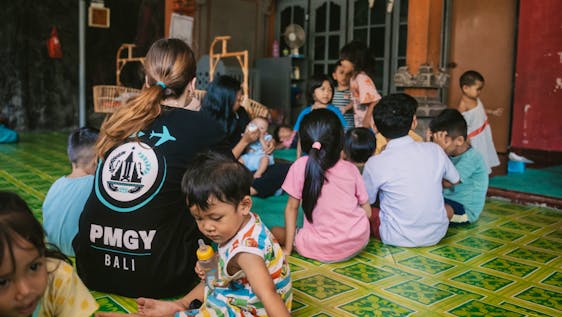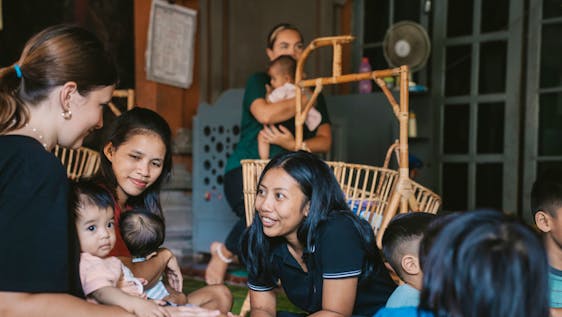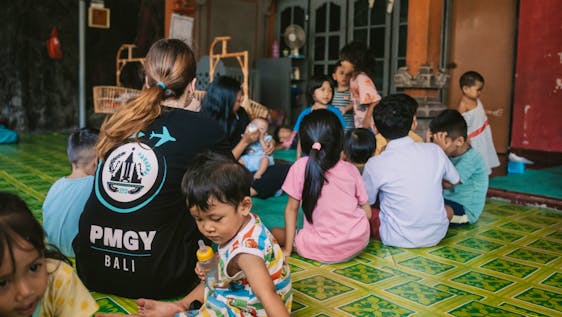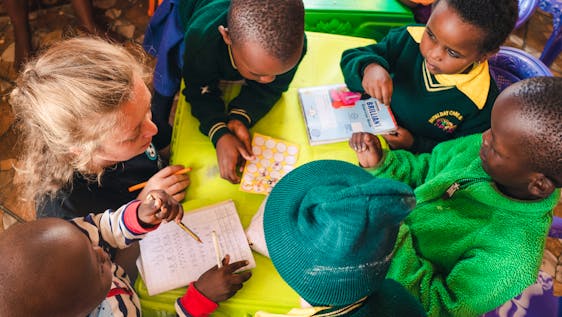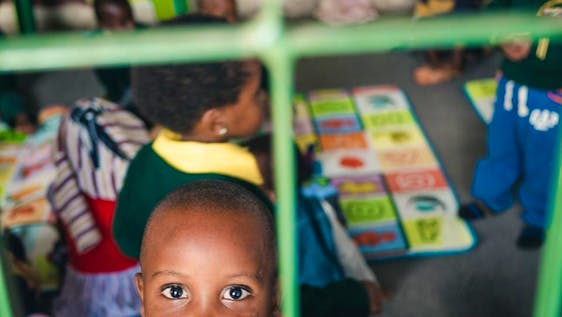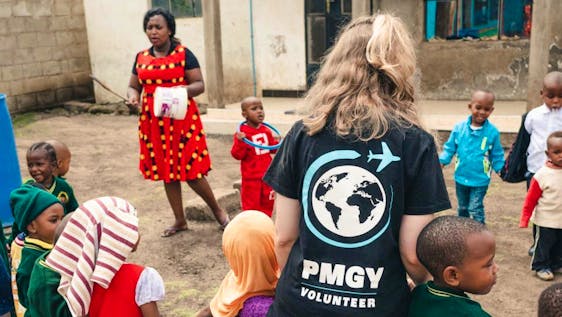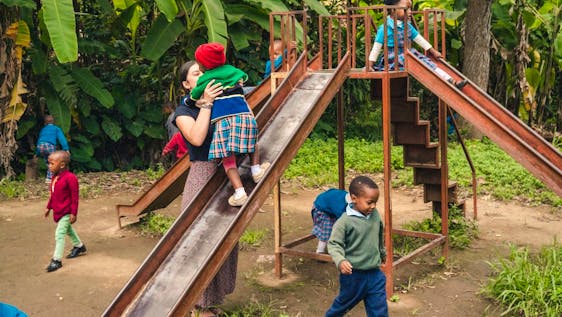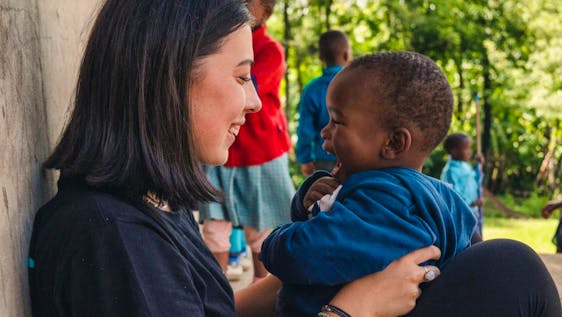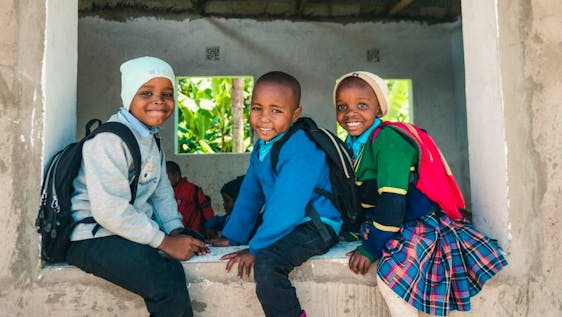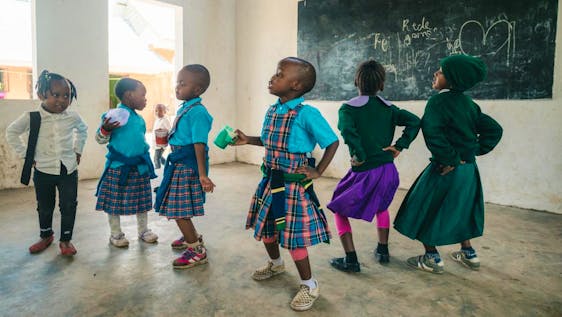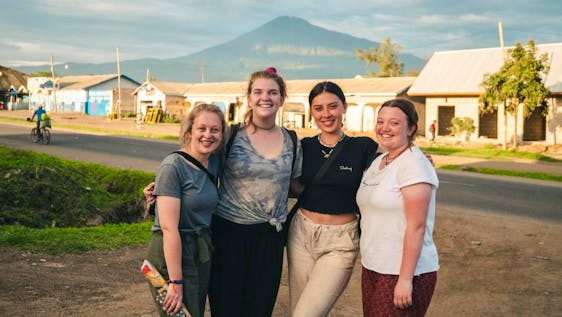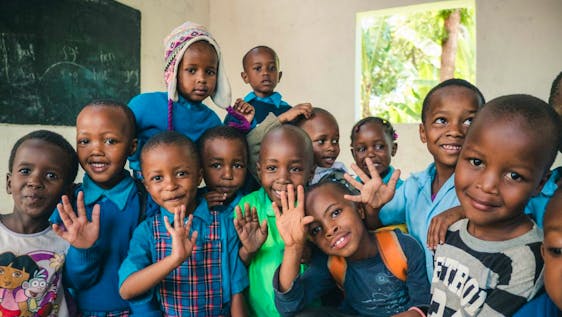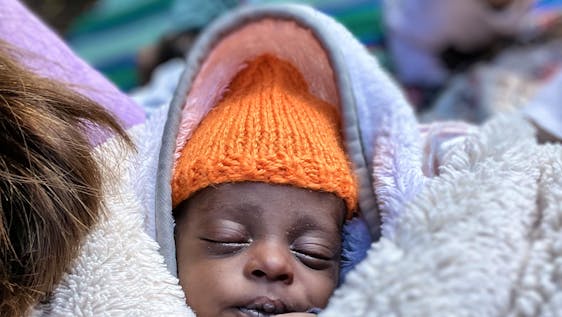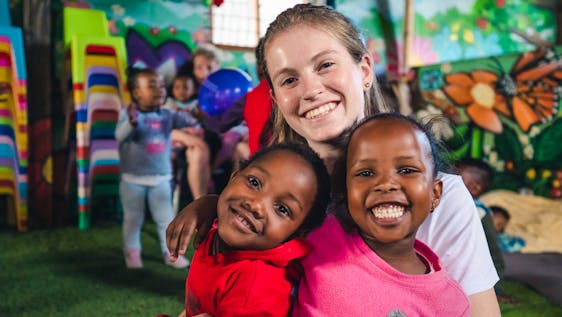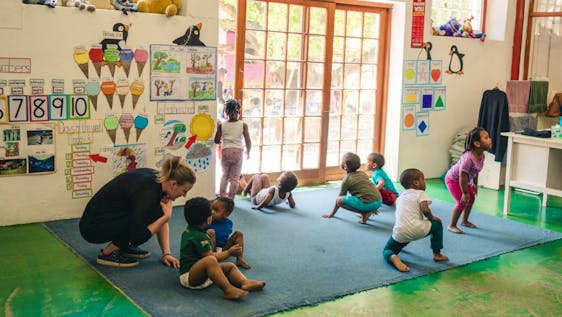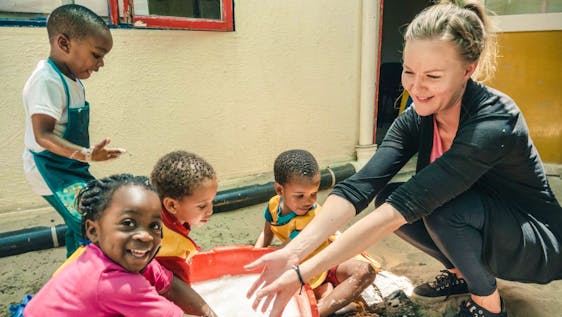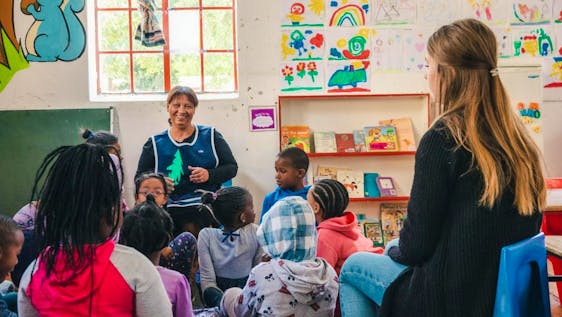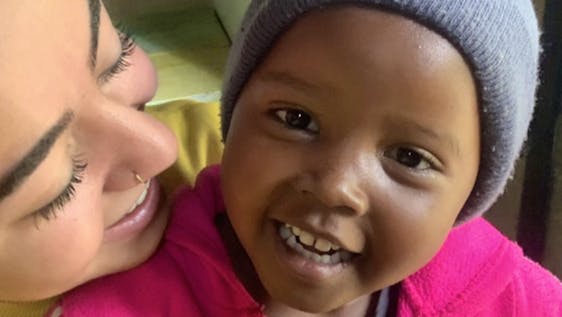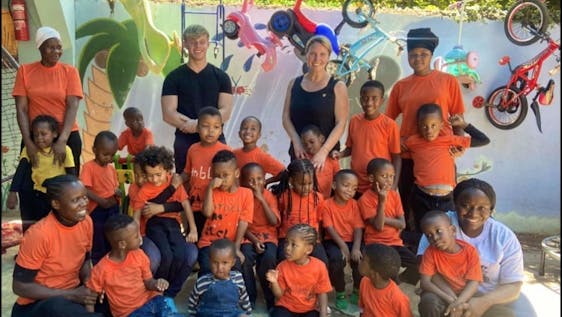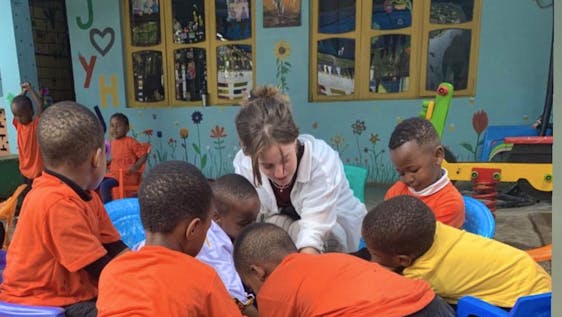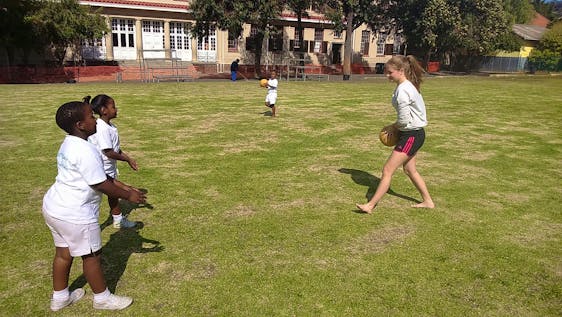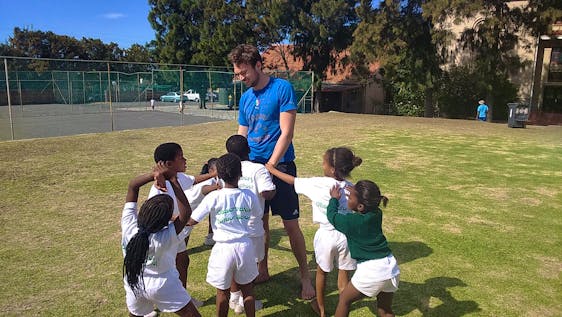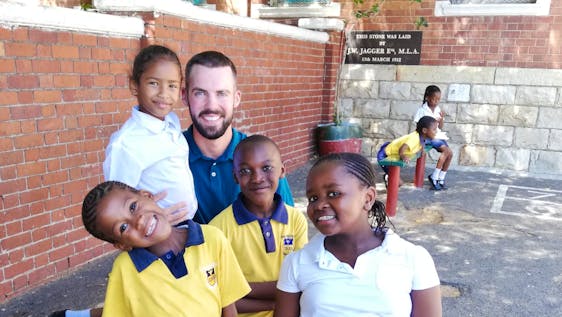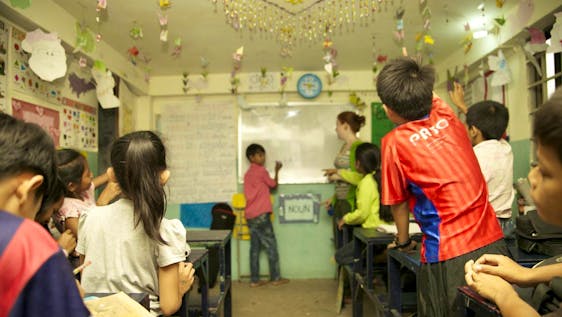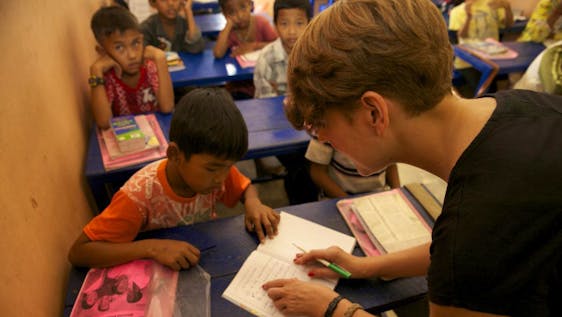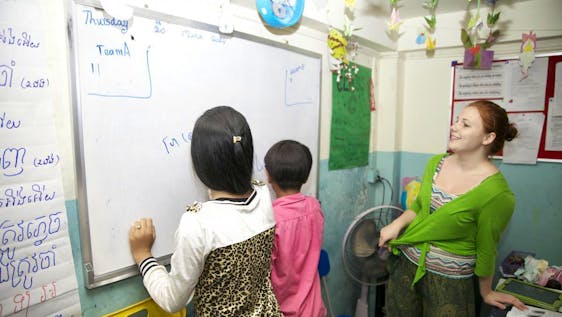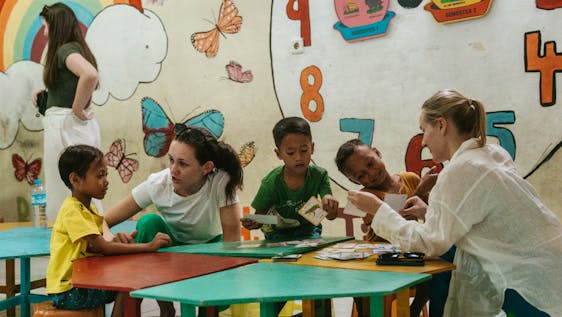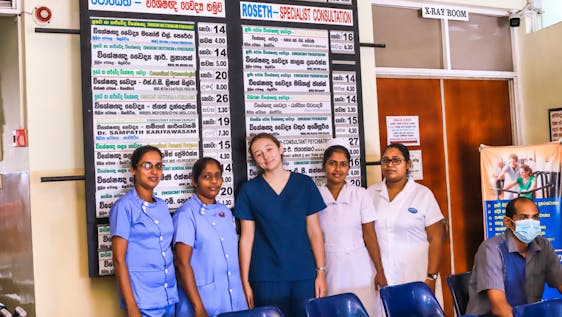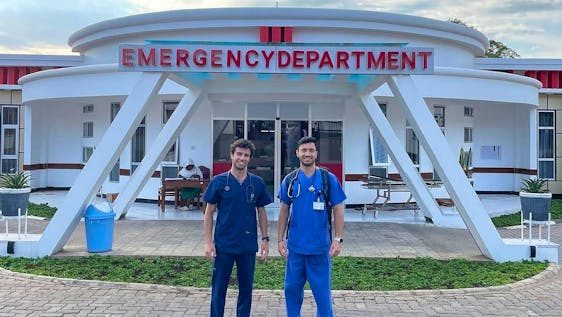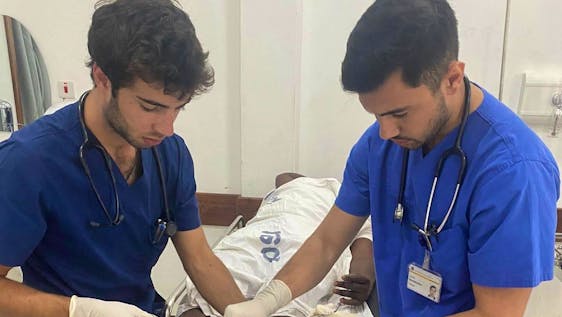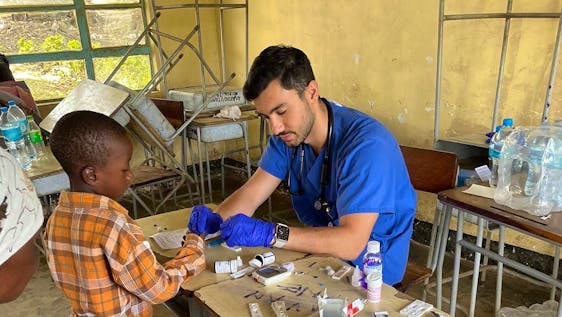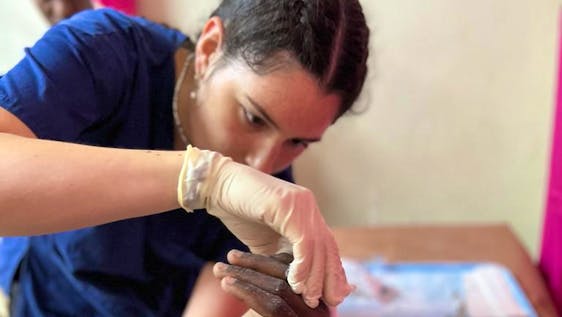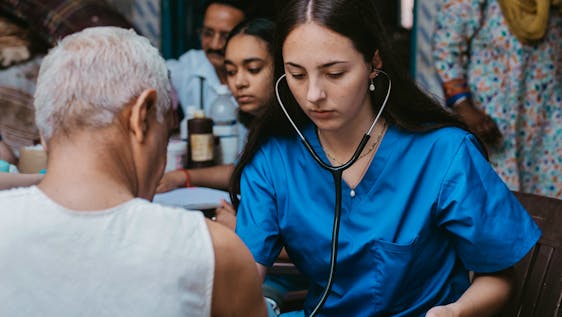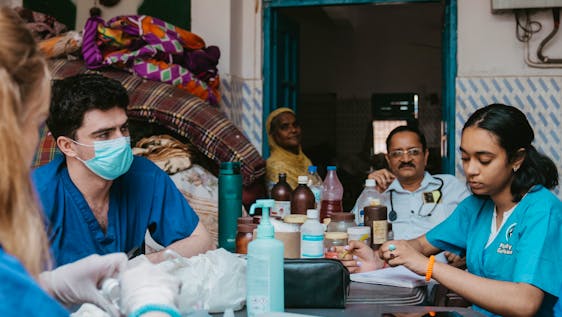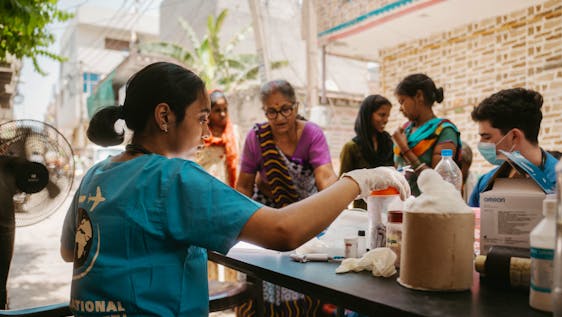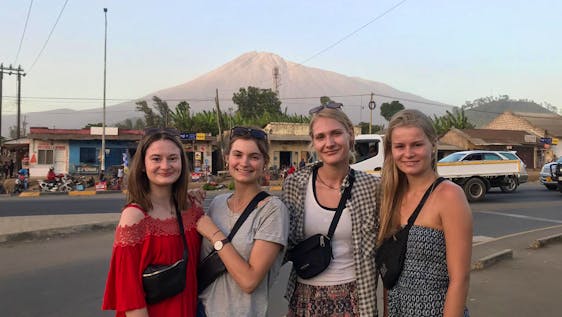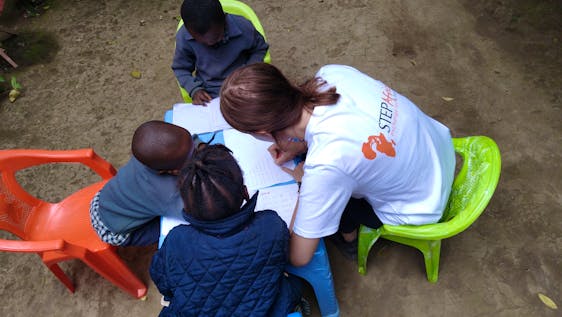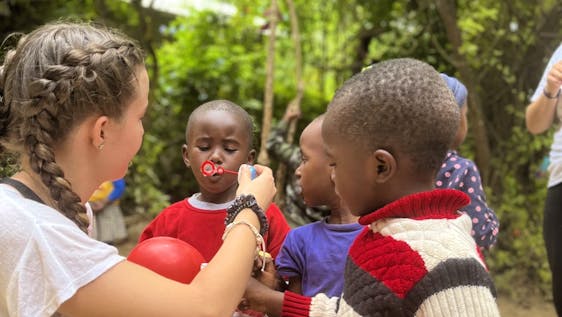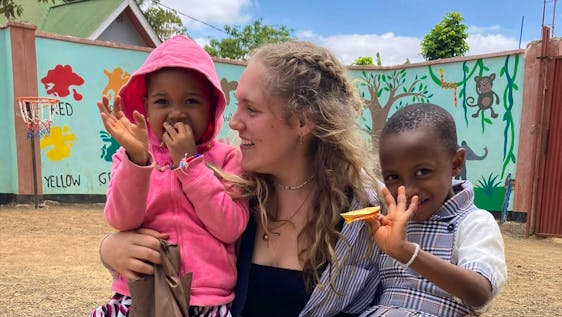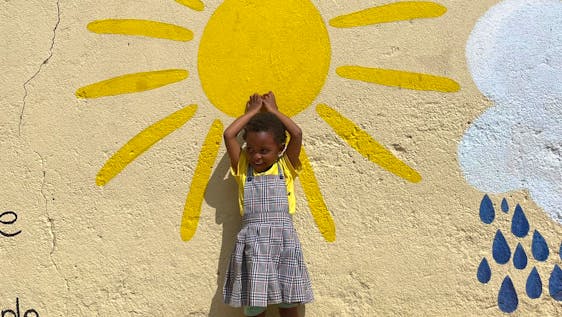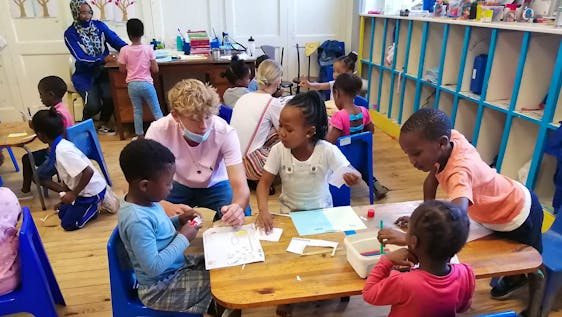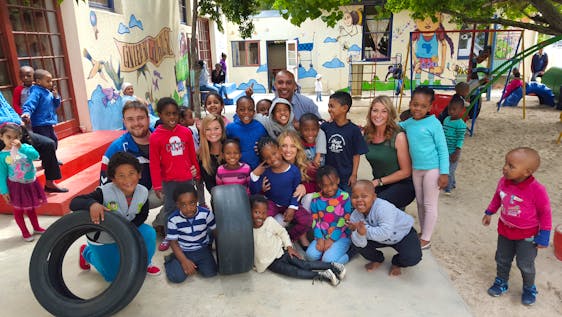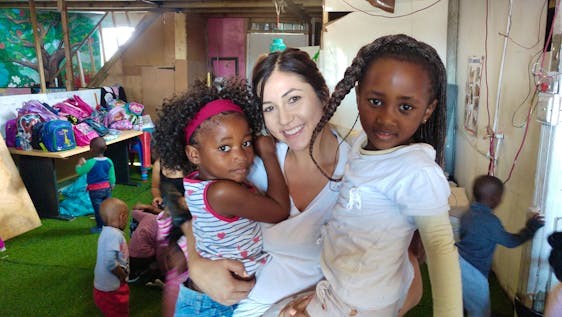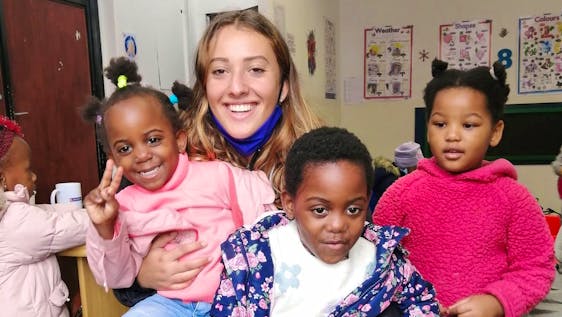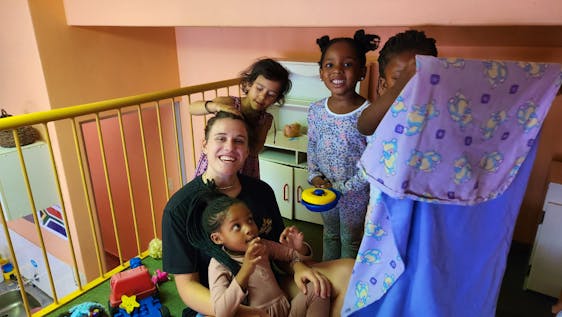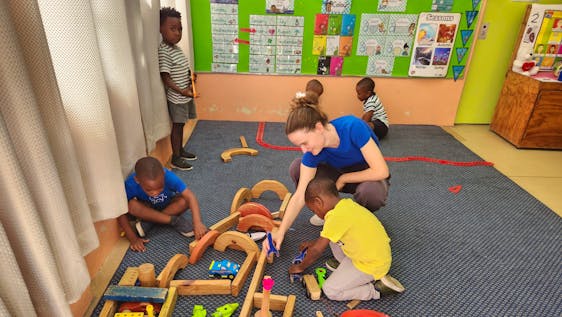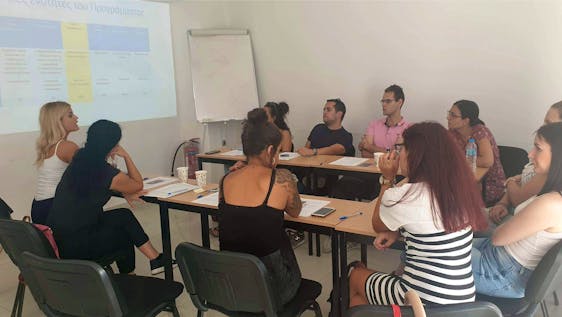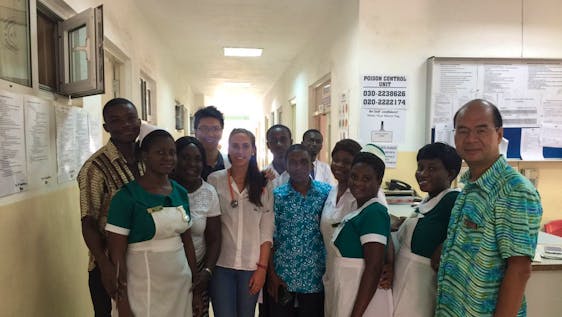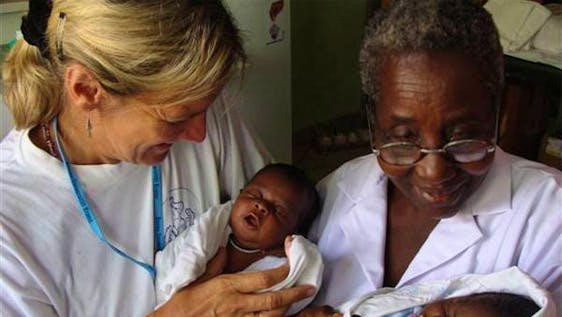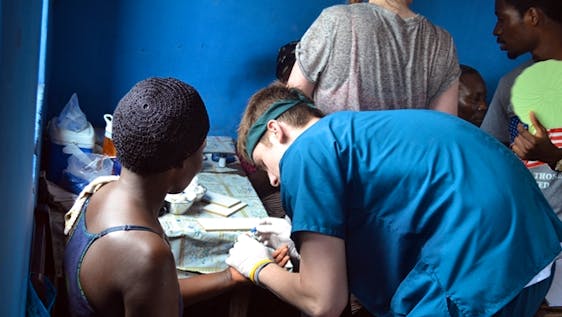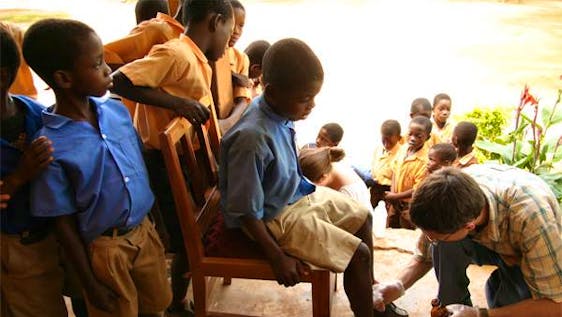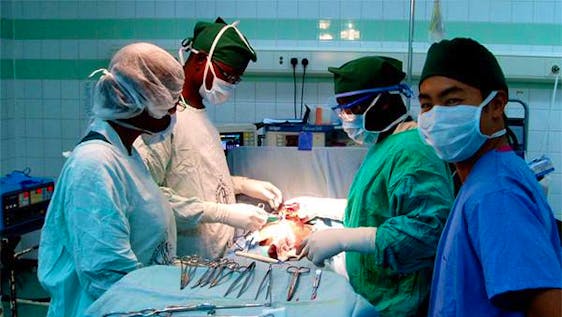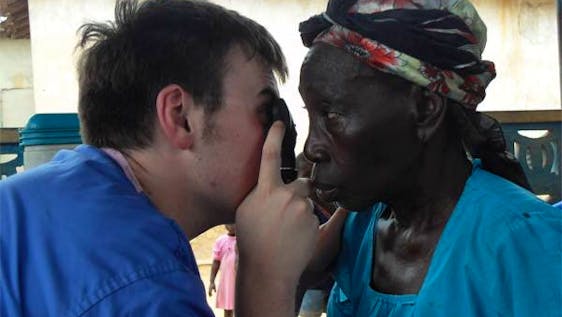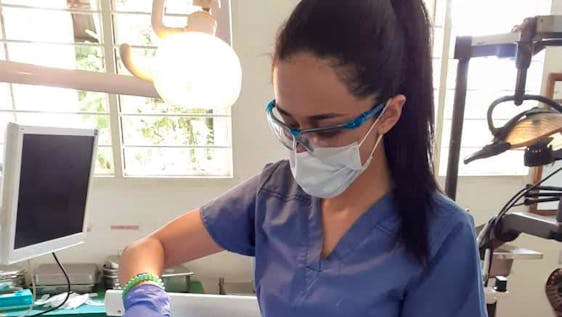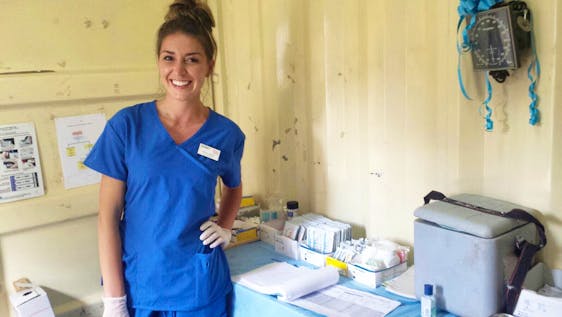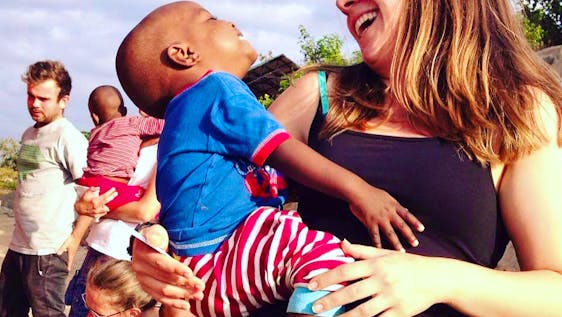- 17,000 fewer children die each day than in 1990, but more than six million children still die before their fifth birthday each year
- Since 2000, measles vaccines have averted nearly 15.6 million deaths
- Despite determined global progress, an increasing proportion of child deaths are in sub-Saharan Africa and Southern Asia. Four out of every five deaths of children under age five occur in these regions.
- Children born into poverty are almost twice as likely to die before the age of five as those from wealthier families.
- Children of educated mothers-even mothers with only primary schooling-are more likely to survive than children of mothers with no education.
Good Health And Well-Being
Good Health And Well-Being
Good Health And Well-Being
Ensuring healthy lives and promoting the well-being for all at all ages is essential to sustainable development. Significant strides have been made in increasing life expectancy and reducing some of the common killers associated with child and maternal mortality. Major progress has been made on increasing access to clean water and sanitation, reducing malaria, tuberculosis, polio and the spread of HIV/AIDS. However, many more efforts are needed to fully eradicate a wide range of diseases and address many different persistent and emerging health issues.
What's the goal here?
To ensure healthy lives and promote well-being for all at all ages.
Facts & figures
Child health
Maternal health
- Maternal mortality has fallen by almost 50 per cent since 1990
- In Eastern Asia, Northern Africa and Southern Asia, maternal mortality has declined by around two-thirds
- But maternal mortality ratio - the proportion of mothers that do not survive childbirth compared to those who do - in developing regions is still 14 times higher than in the developed regions
- More women are receiving antenatal care. In developing regions, antenatal care increased from 65 per cent in 1990 to 83 per cent in 2012
- Only half of women in developing regions receive the recommended amount of health care they need
- Fewer teens are having children in most developing regions, but progress has slowed. The large increase in contraceptive use in the 1990s was not matched in the 2000s
- The need for family planning is slowly being met for more women, but demand is increasing at a rapid pace
HIV/AIDS, malaria and other diseases
- At the end of 2014, there were 13.6 million people accessing antiretroviral therapy
- New HIV infections in 2013 were estimated at 2.1 million, which was 38 per cent lower than in 2001
- At the end of 2013, there were an estimated 35 million people living with HIV
- At the end of 2013, 240 000 children were newly infected with HIV
- New HIV infections among children have declined by 58 per cent since 2001
- Globally, adolescent girls and young women face gender-based inequalities, exclusion, discrimination and violence, which put them at increased risk of acquiring HIV
- HIV is the leading cause of death for women of reproductive age worldwide
- TB-related deaths in people living with HIV have fallen by 36% since 2004
- There were 250 000 new HIV infections among adolescents in 2013, two thirds of which were among adolescent girls
- AIDS is now the leading cause of death among adolescents (aged 10-19) in Africa and the second most common cause of death among adolescents globally
- In many settings, adolescent girls' right to privacy and bodily autonomy is not respected, as many report that their first sexual experience was forced
- As of 2013, 2.1 million adolescents were living with HIV
- Over 6.2 million malaria deaths have been averted between 2000 and 2015, primarily of children under five years of age in sub-Saharan Africa. The global malaria incidence rate has fallen by an estimated 37 per cent and the mortality rates by 58 per cent
- Between 2000 and 2013, tuberculosis prevention, diagnosis and treatment interventions saved an estimated 37 million lives. The tuberculosis mortality rate fell by 45 per cent and the prevalence rate by 41 per cent between 1990 and 2013
Why?
Ensuring healthy lives and promoting well-being for all at all ages is important to building prosperous societies.
However, despite great strides in improving people's health and well-being in recent years, inequalities in health care access still persist. More than six million children still die before their fifth birthday each year, and only half of all women in developing regions have access to the health care they need.
Epidemics like HIV/AIDS thrive where fear and discrimination limit people's ability to receive the services they need to live healthy and productive lives. Access to good health and well-being is a human right, and that is why the Sustainable Development Agenda offers a new chance to ensure that everyone can access the highest standards of health and health care -not just the wealthiest.
What progress have we made so far?
Major progress has been made in several areas, including in child and maternal health as well as in addressing HIV/AIDS, malaria and other diseases.
Maternal mortality has fallen by almost 50 per cent since 1990; measles vaccines have averted nearly 15.6 million deaths since 2000; and 13.6 million people had access to antiretroviral therapy by the end of 2014.
We may have come a long way, but we still have a longer way to go. Real progress means achieving universal health coverage; making essential medicines and vaccines affordable; ensuring that women have full access to sexual and reproductive health care; and ending all preventable deaths of children.
How much will it cost to achieve these targets?
Ensuring healthy lives for all requires a strong commitment, but the benefits outweigh the cost. Healthy people are the foundation for healthy economies.
For example, if we spent $1 billion in expanding immunization coverage against influenza, pneumonia and other preventable diseases, we could save 1 million children's lives each year. In the past decade, improvements in health and health care led to a 24 per cent increase in income growth in some of the poorest countries.
The cost of inaction is greater-millions of children will continue to die from preventable diseases, women will die in pregnancy and childbirth, and health care costs will continue to plunge millions of people into poverty. Noncommunicable diseases alone will cost low- and middle-income countries more than $7 trillion in the next 15 years.
What can I do to help?
You can start by promoting and protecting your own health and the health of those around you, by making well-informed choices, practicing safe sex and vaccinating your children.
You can raise awareness in your community about the importance of good health, healthy lifestyles as well as people's right to quality health care services.
Take action through schools, clubs, teams and organizations to promote better health for all, especially for the most vulnerable such as women and children.
You can also hold your government, local leaders and other decision-makers accountable to their commitments to improve people's access to health and health care.
Where are volunteer projects that need my help?
Discover related Sustainable Development Goals
The Sustainable Development Goals aim to end poverty, protect the planet, and ensure prosperity for all. As such, the 17 SDGs and its associated 169 targets do not stand alone, but are are interconnected. The key to success on one will involve tackling issues more commonly associated with another. If you are interested in supporting a cause addressing to the goal {sdg.name}, you might also be interested in the related goals No Poverty, Decent Work And Economic Growth, Reduced Inequalities, Sustainable Cities And Communities, Life Below Water and Life On Land.
Please visit the website of the United Nations to find out more about Goal 03 Good Health And Well-Being and other Sustainable Development Goals.
Source: United Nations

 Hotspots
Hotspots
 Intern Abroad
Intern Abroad
 Activities
Activities
 Africa
Africa
 Community
Community
 Childcare
Childcare
 Eastern Africa
Eastern Africa
 Tanzania
Tanzania
 Arusha
Arusha
 Healthcare
Healthcare
 Medical Training
Medical Training
 Asia
Asia
 Nursing Internship
Nursing Internship
 South East Asia
South East Asia
 Americas
Americas
 Midwifery Internship
Midwifery Internship
 Education
Education
 Southern Africa
Southern Africa
 South Africa
South Africa
 Indonesia
Indonesia
 Bali
Bali
 Cape Town
Cape Town
 Southern Asia
Southern Asia
 Southern Europe
Southern Europe
 Europe
Europe
 Premium
Premium
 Physical Therapy Internship
Physical Therapy Internship
 Spanish Courses
Spanish Courses
 Language Course
Language Course
 Vegan
Vegan
 Volunteer and Travel
Volunteer and Travel
 Voluntourism
Voluntourism
 Central America
Central America
 Sports
Sports
 Costa Rica
Costa Rica
 Safari
Safari
 Families with small kids
Families with small kids
 Psychology Internship
Psychology Internship
 Pediatrics Volunteer
Pediatrics Volunteer
 Soccer
Soccer
 Sri Lanka
Sri Lanka
 Vietnam
Vietnam
 Yoga
Yoga
 Greece
Greece
 Athens
Athens
 Dental Internship
Dental Internship
 Machu Picchu
Machu Picchu
 Galapagos
Galapagos
 Sea Turtle Conservation
Sea Turtle Conservation
 Monkey Conservation
Monkey Conservation
 Spider Monkey
Spider Monkey
 Leatherback Turtle
Leatherback Turtle
 Sloth Sanctuary
Sloth Sanctuary
 Hanoi
Hanoi
 Western Africa
Western Africa
 Spain
Spain
 Ghana
Ghana
 Basketball
Basketball
 India
India
 Volleyball
Volleyball
 Delhi
Delhi
 Bilbao
Bilbao
 South America
South America
 Accra
Accra
 English Teaching
English Teaching
 Social Work
Social Work
 Peru
Peru
 Cusco
Cusco
 Nutrition and Food
Nutrition and Food
 San Jose
San Jose
 Ho Chi Minh
Ho Chi Minh
 Orphanage
Orphanage
 Special Needs
Special Needs
 Kumasi
Kumasi
 Kenya
Kenya
 Ubud
Ubud
 Nairobi
Nairobi
 Cambodia
Cambodia
 Caribbean
Caribbean
 Dominican Republic
Dominican Republic
 Guatemala
Guatemala
 Antigua
Antigua
 Phnom Penh
Phnom Penh
 Kilimanjaro
Kilimanjaro
 Ecuador
Ecuador
 Quito
Quito
 Manuel Antonio
Manuel Antonio
 National Park
National Park
 Uganda
Uganda
 Youth Teaching
Youth Teaching
 Nepal
Nepal
 Kathmandu
Kathmandu
 Women Empowerment
Women Empowerment
 Senegal
Senegal
 Jaipur
Jaipur
 Philippines
Philippines
 Zanzibar
Zanzibar
 Culture and Arts
Culture and Arts
 Chile
Chile
 Working with Seniors
Working with Seniors
 Elderly Care
Elderly Care
 Surfing
Surfing
 Colombia
Colombia
 Brazil
Brazil
 Rio de Janeiro
Rio de Janeiro
 Primary School
Primary School
 Victoria Falls
Victoria Falls
 Zimbabwe
Zimbabwe
 Mombasa
Mombasa
 Kolkata
Kolkata
 Netball
Netball
 Bolivia
Bolivia
 Italy
Italy
 Rome
Rome
 Music
Music
 Theater
Theater
 Rwanda
Rwanda
 Chios
Chios
 Knysna
Knysna
 Hiking
Hiking
 Snorkeling
Snorkeling
 Malawi
Malawi
 Tennis
Tennis
 Elephant Conservation
Elephant Conservation
 African Elephant
African Elephant
 African Leopard
African Leopard
 African Buffalo
African Buffalo
 Serengeti
Serengeti
 White Rhino
White Rhino
 Buffalo Conservation
Buffalo Conservation
 Rhino Conservation
Rhino Conservation
 Southwest African Lion
Southwest African Lion
 Lion Conservation
Lion Conservation
 Leopard Conservation
Leopard Conservation
 Animal Shelter
Animal Shelter
 Dog
Dog
 Refugees
Refugees
 Animal
Animal
 Veterinary Training
Veterinary Training
 Street Animals
Street Animals
 Northern Africa
Northern Africa
 Morocco
Morocco
 Musanze
Musanze
 Argentina
Argentina
 Buenos Aires
Buenos Aires
 Middle Africa
Middle Africa
 Cameroon
Cameroon
 Human Rights
Human Rights
 Jamaica
Jamaica
 NGO Support
NGO Support
 NGO Management
NGO Management
 Oceania
Oceania
 Melanesia
Melanesia
 Waste Reduction
Waste Reduction
 Fiji
Fiji
 Plastic Reduction
Plastic Reduction
 Cape Verde
Cape Verde
 Cats
Cats
 Himalaya
Himalaya
 Beach Cleaning
Beach Cleaning
 Ecological Farming
Ecological Farming
 Environment
Environment
 Reforestation
Reforestation
 Energy and Water
Energy and Water
 Honduras
Honduras
 Reptile Conservation
Reptile Conservation
 Crocodile
Crocodile
 Indigenous cultures
Indigenous cultures
 Chiang Mai
Chiang Mai
 Vanuatu
Vanuatu
 Swaziland
Swaziland
 Thailand
Thailand
 Port Elizabeth
Port Elizabeth
 Kruger National Park
Kruger National Park
 Journalism Internship
Journalism Internship
 Puerto Viejo
Puerto Viejo
 Horse
Horse
 Horse Therapy
Horse Therapy
 Egypt
Egypt
 Marketing and IT
Marketing and IT
 Agriculture
Agriculture
 Conservation Work
Conservation Work
 Mexico
Mexico
